Palmer, Gerald Searing
Killed in Action 1941-11-04
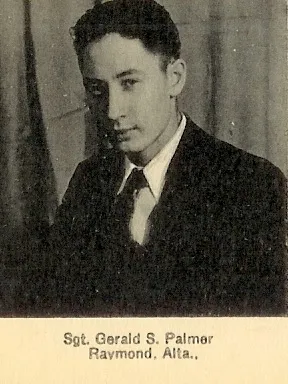

Birth Date: 1919-May-05
Born:
Son of Frank Marion Palmer and Carrie Lee Palmer, of Raymond, Alberta.
Home: Raymond, Alberta
Enlistment:
Enlistment Date: Unknown
Service
RCAF
Unit
5 (BR) Sqn- Squadron
Base
RCAF Penticton Seaplane Base, Okanagan, BC
Rank
Sergeant
Position
Sergeant
Service Numbers
P/4216
Prev: P4216
Home
 Raymond, Alberta
Raymond, Alberta
First Burial
 Ottawa War Memorial, Ottawa, Ontario
Ottawa War Memorial, Ottawa, Ontario
This incident involved multiple aircraft:
- Stranraer Serial: 946
All the above aircraft in the above list are referenced in this report.
Stranraer 946
Supermarine Stranraer
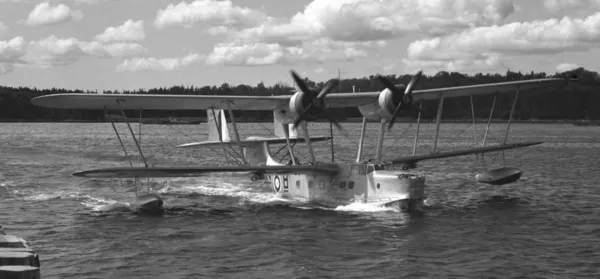
Canadian Vickers Stranraer, RCAF (Serial No. 913), CV190, coded QN-B, No. 5 (Bomber Reconnaissance) Squadron, RCAF Station Dartmouth, Nova Scotia, sometime between 1938 and 1941.
The Supermarine Stranraer was a flying boat designed and built by the British Supermarine Aviation Works company. It was developed during the 1930s on behalf of its principal operator, the Royal Air Force (RAF).Derived from the Supermarine Scapa, the aircraft's design was heavily shaped by Specification R.24/31. While initially rejected by the Air Ministry, Supermarine persisted with development as a private venture under the designation Southampton V. During 1933, a contract was placed for a single prototype; it was around this time that the type received the name Stranraer. First flown on 24 July 1934, the Stranraer entered frontline service with the RAF during 1937; most examples of the type were in service by the outbreak of the Second World War.
The Stranraer's typically undertook anti-submarine and convoy escort patrols during the early years of the conflict. During March 1941, it was withdrawn from frontline service, but continued to be operated in a training capacity up until October 1942. In addition to the British-built aeroplanes, the Canadian Vickers company in Montreal, Quebec, also manufactured 40 Stranraers under licence for the Royal Canadian Air Force (RCAF). These Canadian Stranraers served in anti-submarine and coastal defence capacities on both Canada's Atlantic and Pacific coasts, and were in regular service until 1946. Following their withdrawal from military service, many ex-RCAF Stranraers were sold off to fledgeling regional airlines, with whom they served in various commercial passenger and freighter operations into the 1950s.
The Royal Canadian Air Force (RCAF) Stranraers were exact equivalents of their RAF counterparts. In Canadian service, they were usually employed in coastal patrol against submarine threats in a similar role to the British Stranraers. The Canadian Vickers-built Stranraers served with the RCAF throughout the war, the last example being withdrawn on 20 January 1946.Wikipedia
Stranraer 946
Stranraer 946
Ferried from east coast to west coast by crew from No. 5 (BR) Squadron. Left Rockcliffe on 7 October 1941, ferried via Ontario and Manitoba, then Regina, Saskatchewan to Brooks, Alberta, then Penticton, BC. Tip float damaged by dock at Penticton, on 23 October 1941, repairs took 12 days. Went missing on 4 November 1941, en route from Penticton, BC to Vancouver Island. Crashed 10 miles south-east of Squamish, BC. Flew into high terrain in bad weather. All 5 crew killed. Wreckage not located until 6 October 1947.1941-10-07 Taken on Strength 2019-08-20
1941-November-04 Accident: MISC FerryING Loc: On Pacific Coast Names: Bliss | Fernie | Palmer | Ross | Willet
1942-06-01 Struck off Strength Struck off after going missing, see comments. 2019-08-20
 Canadian Virtual War Memorial
Canadian Virtual War Memorial Commonwealth War Graves Commission
Commonwealth War Graves Commission www.findagrave.com
www.findagrave.com

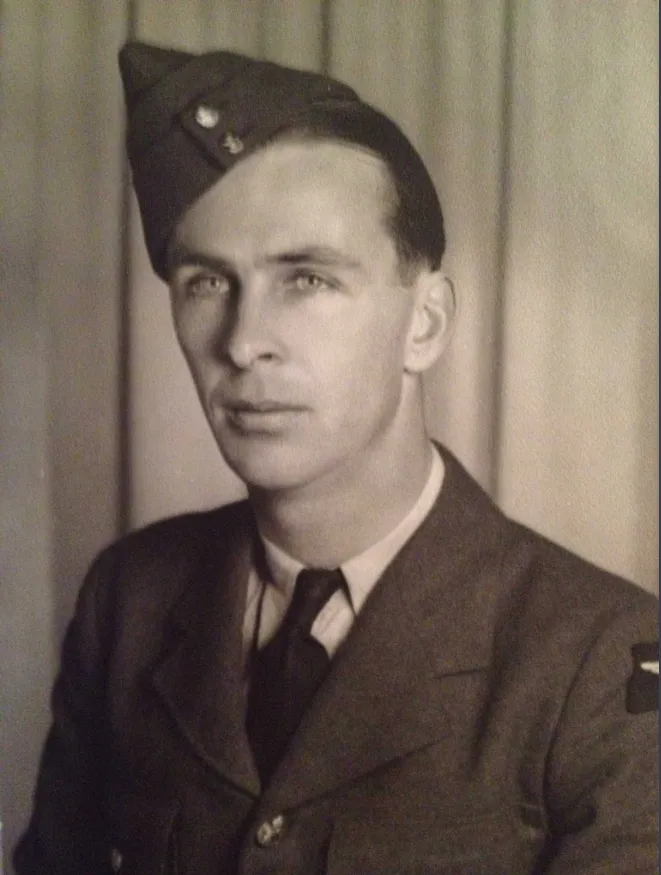
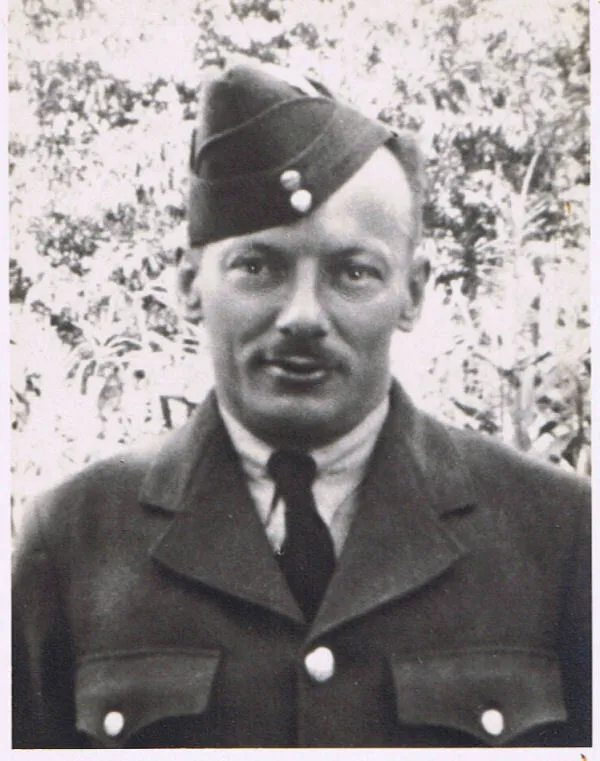
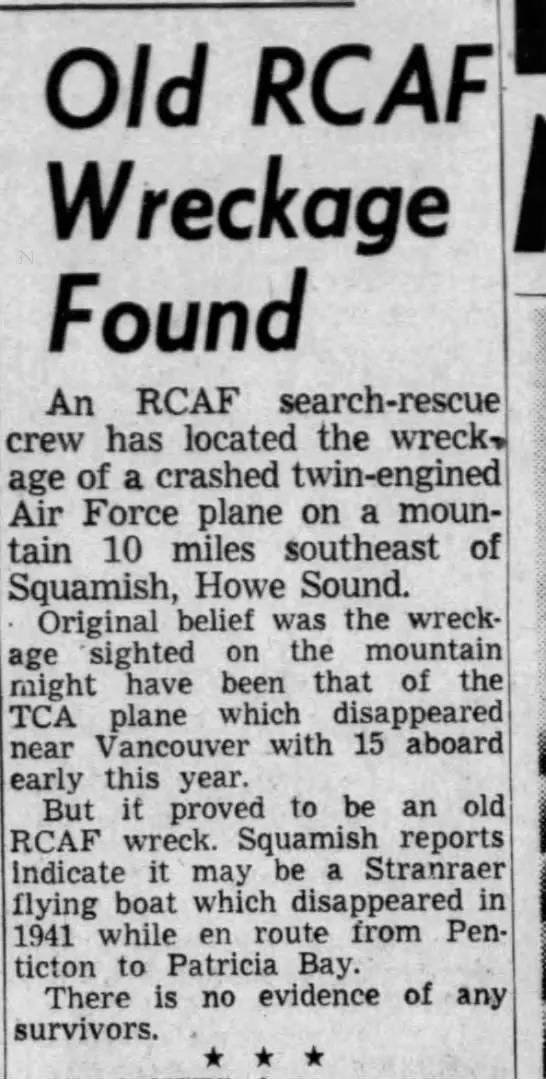
 Wikipedia Supermarine Stanraer
Wikipedia Supermarine Stanraer Harold A Skaarup Web Page
Harold A Skaarup Web Page